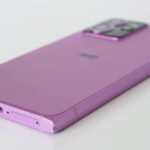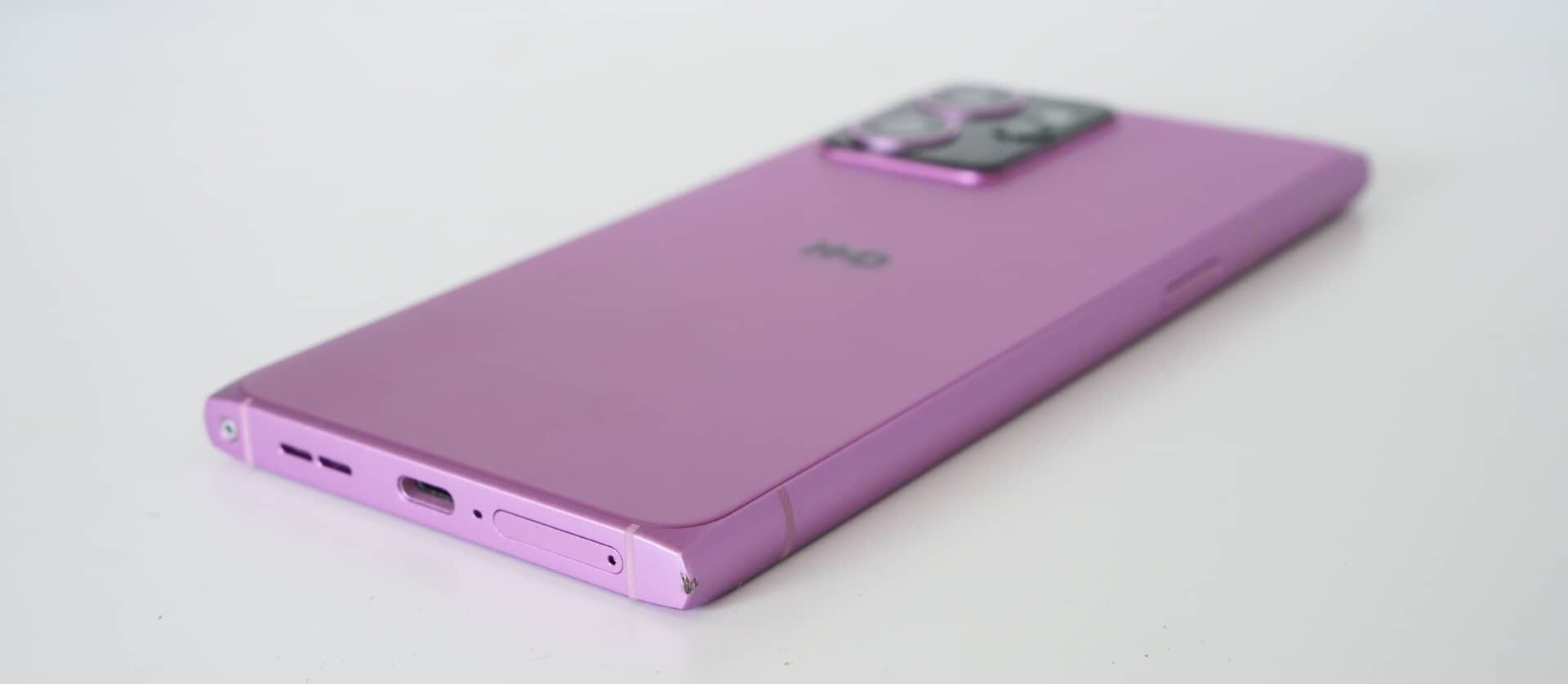Quick review
The good
The not-so-good
A big screen and equally large battery are solid reasons to consider the HMD Skyline. But the repairability and Qi2 might just make it one of HMD’s more intriguing phones yet.
Design
An interesting take on a phone, the HMD Skyline is bright, angular, and self-repairable. It’s different from most devices we see, and unafraid to stand out.
You’ll find a spacious 6.55 inch screen encased by a distinct chassis, something that feels like it’s already hugged by a phone case. It’s not, but that’s how the design presents itself, reminiscent of some of the Nokia Lumia gear from almost a decade ago (has it really been that long?).
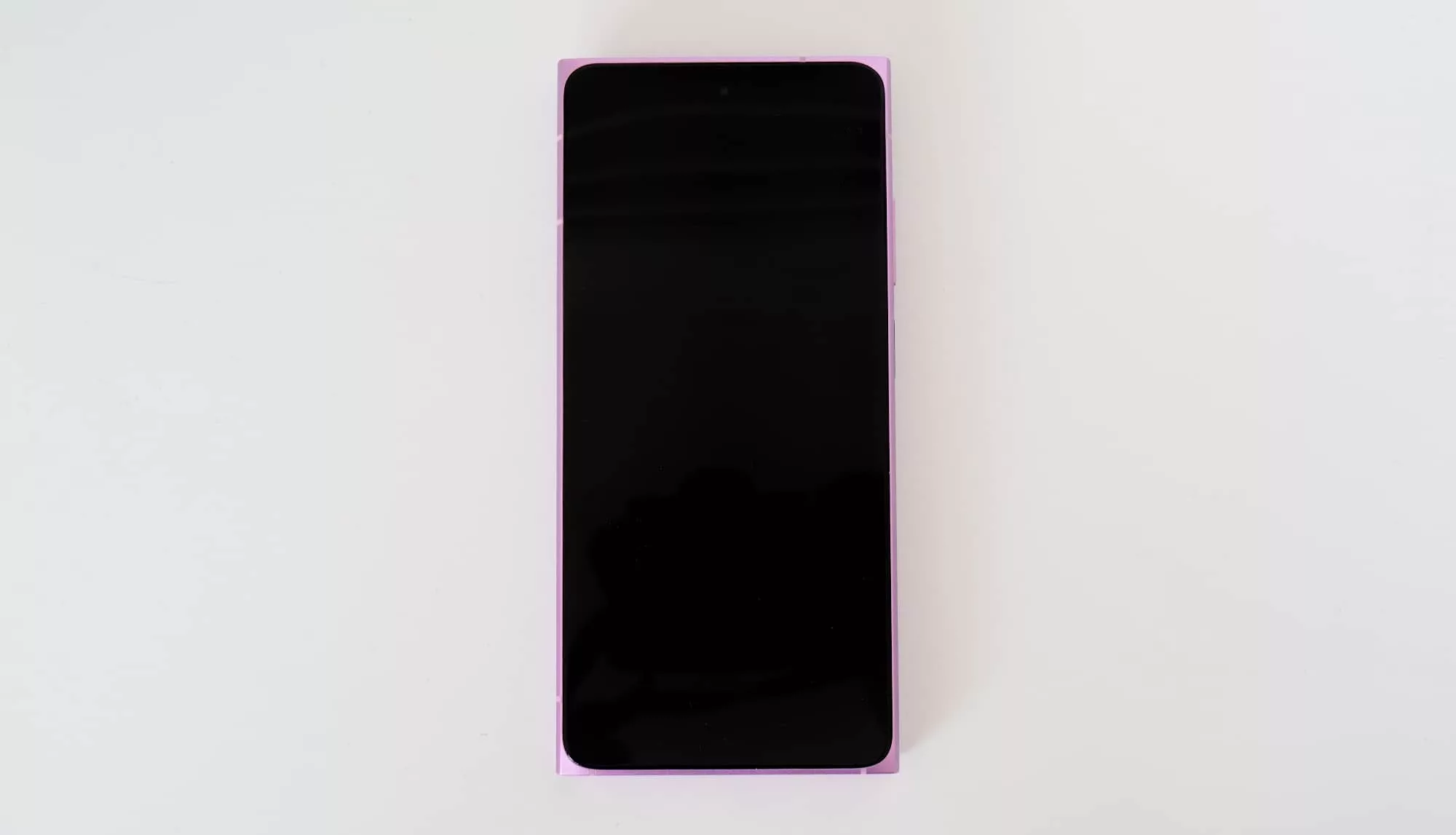
Distinct from the old Lumia models, the Skyline uses metal with a glass back, compared to the unibody hockey puck polycarbonate of the old Nokia handsets. But the look is clearly there.
And that look is definitely different, with the bright pink phone really different from the usual blacks, greys, and other similarly monotone colours. It spreads right to the camera rings, which sport the same colour, helping the phone to stand out.
We’re not sure the design is necessarily for us, but it’s definitely different, and different is always appreciated.
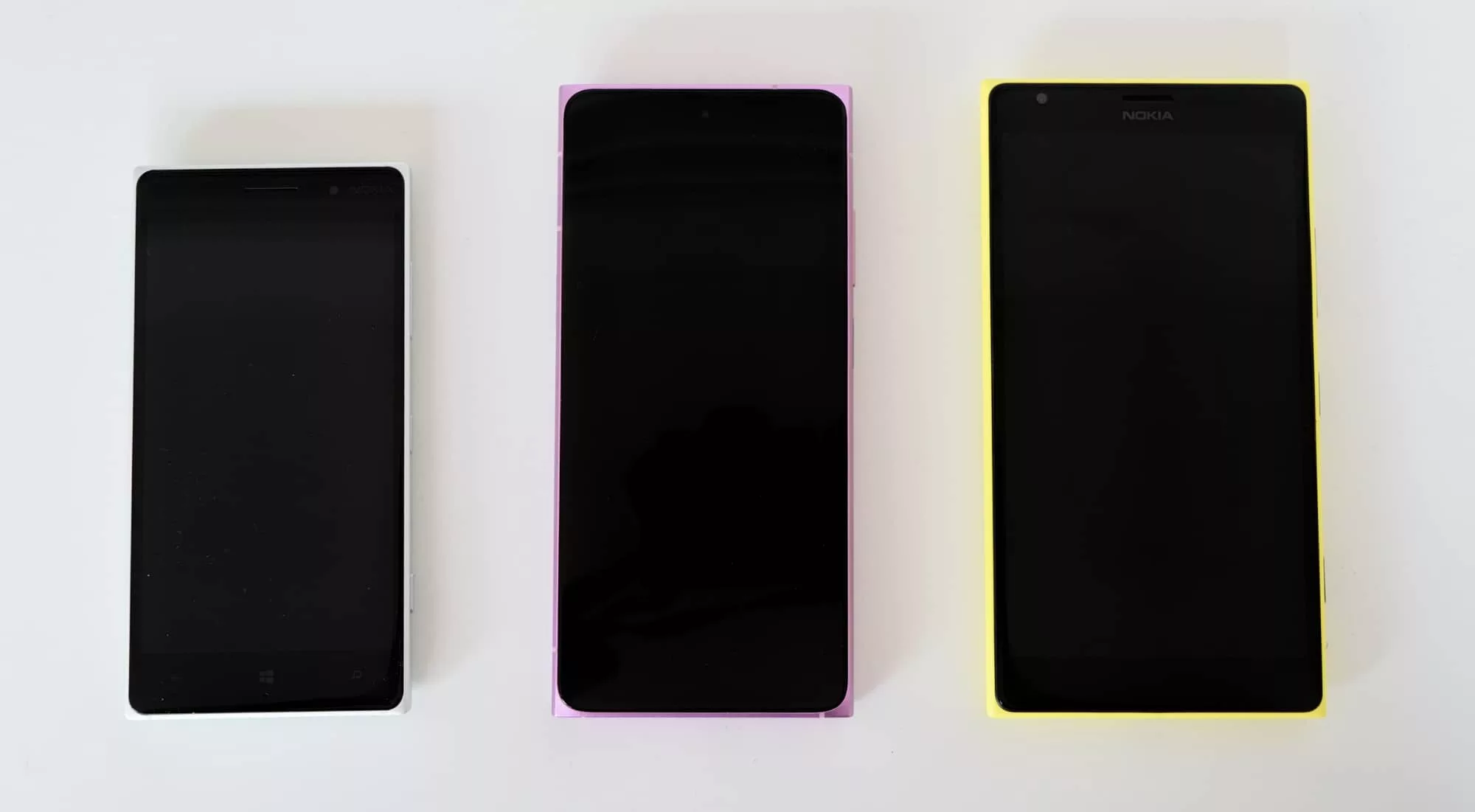
Features
Under the hood, there’s a Qualcomm Snapdragon 7s Gen 2 paired with 12GB RAM and 256GB storage, plus a microSD slot for room to move. Android 14 arrives on the Skyline out of the box, with two upgrades planned, giving it some sense of upgrades in the future.
Three cameras sit in a block on the back, covering a 108 megapixel camera, 50 megapixel 2x telephoto, and 13 megapixel ultra-wide, while the front sees a 50 megapixel camera with autofocus, as well.
You’ll find one physical connection on the Skyline — the USB-C port at the bottom — with any other connection wireless on this handset. That includes Bluetooth 5.2, 802.11a/b/g/n/ac/ax WiFi 6E, 5G, GPS, and Near-Field Communication (NFC) for Google Pay.
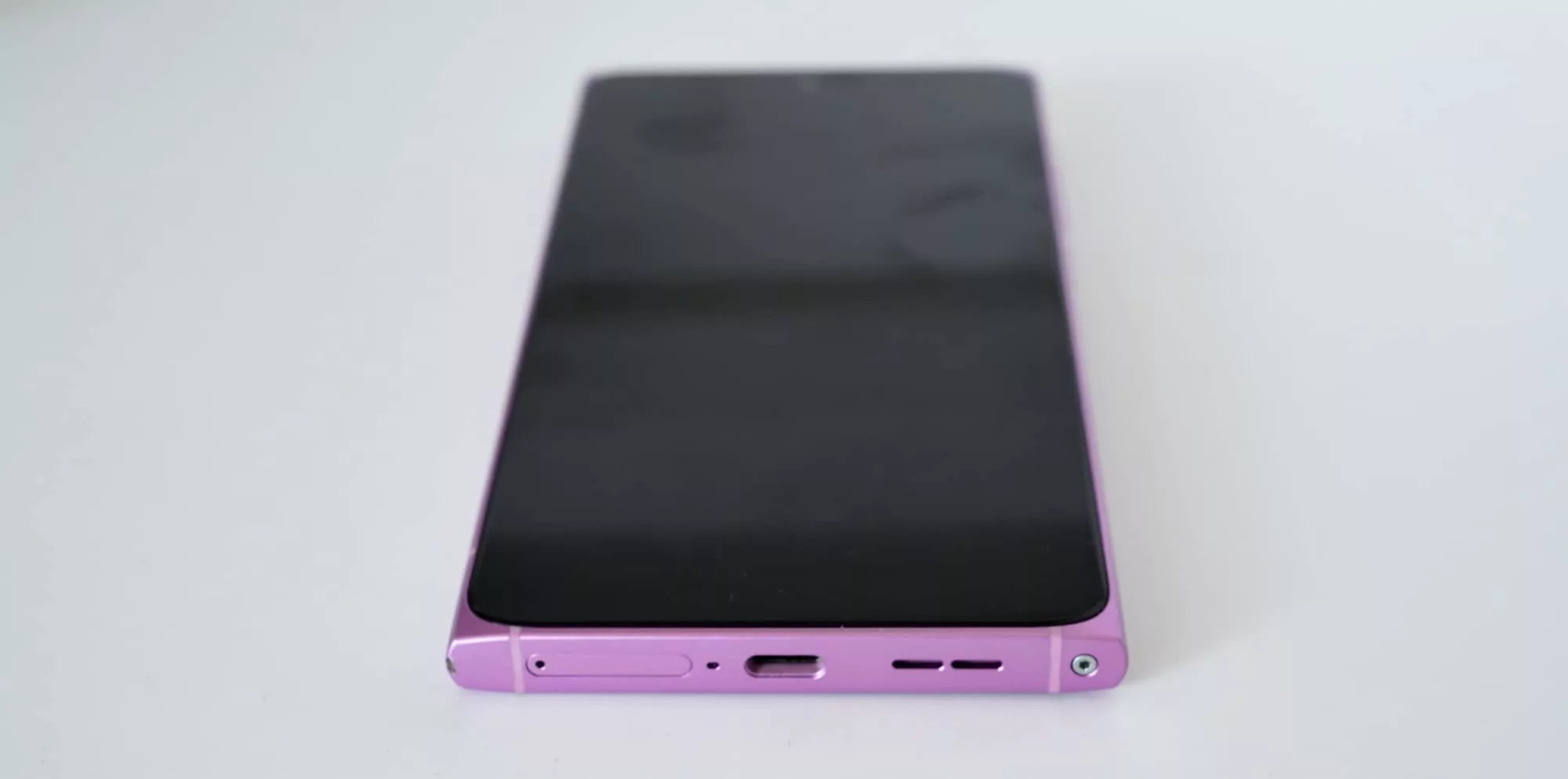
A 6.55 inch pOLED display sits atop all of this, running at 1080×2400 Full HD+, as well as a speedy 144Hz refresh rate, and protected by Corning’s scratch-resistant Gorilla Glass 3.
Beneath it all is a 4600mAh battery, with support for both wired and wireless charging, the latter of which is handled by Qi and Qi2.
You’ll also find IP54 water resistance on the Skyline, a fingerprint sensor in the power button, and a tiny hex screw in the bottom of the phone that allows you to pop open the back cover and fix the handset using a kit from iFixit.
| Model | HMD Skyline (TA-1600) |
| Chip | Qualcomm Snapdragon 7s Gen 2 |
| RAM/Storage | 12GB RAM; 256GB |
| OS | Google Android 14 |
| Cameras | 108mp wide, 50mp 2X telephoto, 13mp ultra-wide |
| Connections | 5G (sub-6), WiFi 6E, Bluetooth 5.2, GPS, NFC, USB-C |
| Size/Weight | 8.9mm, 209g |
| Price | $899 AUD |
In-use
Take the phone out for a spin and you’ll find HMD has made a few changes to Android, but it is largely what you’re probably used to, regardless of whether you’re coming from a prior phone or delving in for something new.
Widgetised home-screens and an app menu, plus icon styles that allow you to keep your shortcut icons in their original colours or adopt a monochrome look by HMD that works well on most colours.
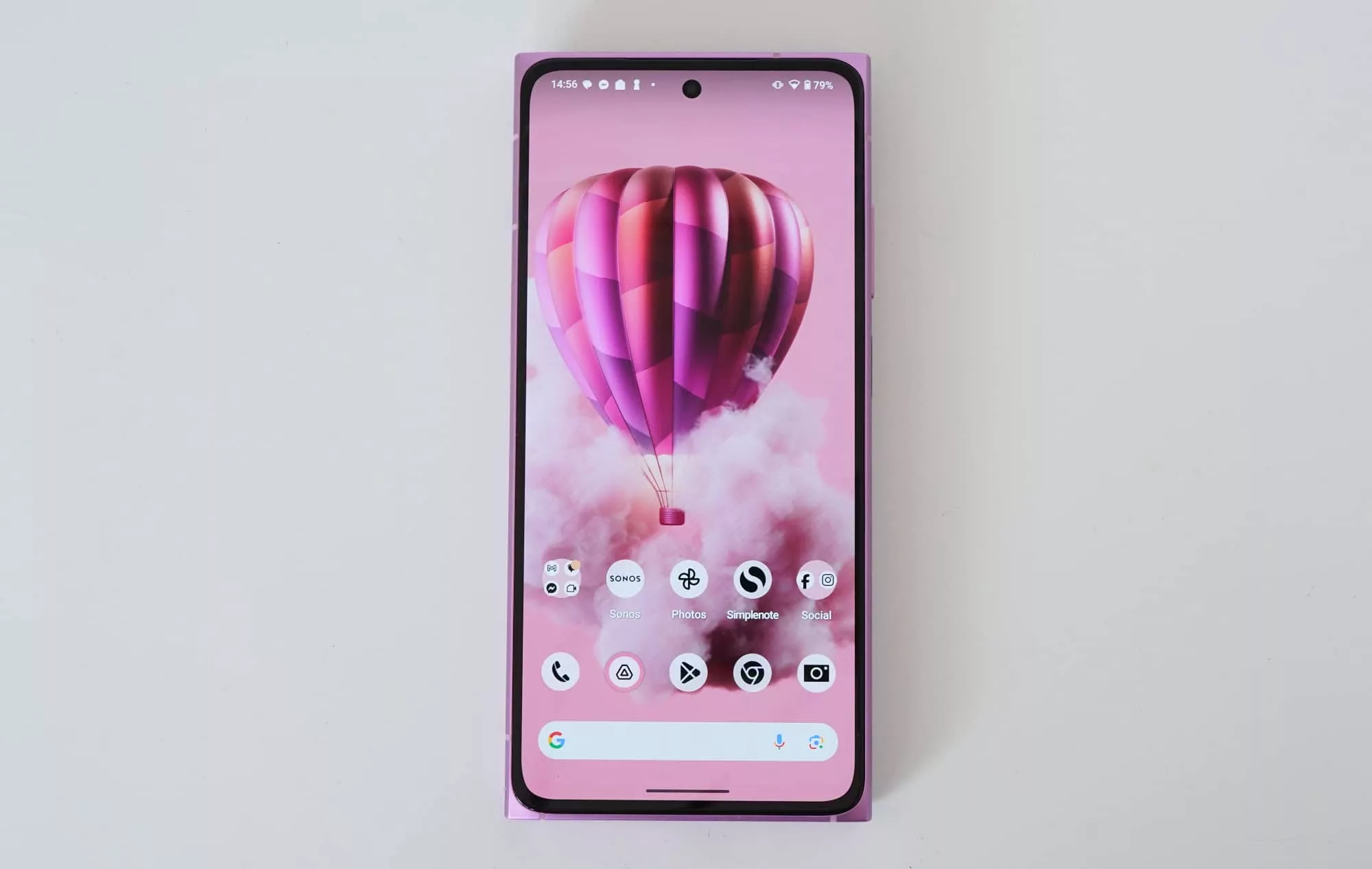
It’s Android as you know it, but with a few tweaks here and there, with a big tweak on the way in the “Digital Detox” mode.
We didn’t get to play with HMD’s Digital Detox feature, and that’s a shame. The Skyline was announced with this addition, a feature designed to let you cut back on smartphone niceties and just enjoy the outside world, but as of the time this review was published, it wasn’t ready.
We’re intrigued and want to play with it dearly — it beats buying a dumb phone just to kill smart features — but owners of the Skyline will need to wait a little longer for HMD to roll this one out.
Performance
You may also have to wait a second or two for some apps to load on the Skyline, with a less impressive processor than expected under the hood.
HMD has supplied a Qualcomm Snapdragon 7, and while that should be good, it’s technically a 7s, making it a little less of a solid performer than its whole-number 7 sibling.
By comparison, the slightly more expensive $999 Motorola Edge 50 Pro uses the Snapdragon 7, and it is faster than the Skyline in just about every way.
In fact, quite a few competitors end up this way.
Nothing’s $529 Phone 2a nears the performance of the phone, while the $849 Google Pixel 8a manages to beat the Skyline in every test, and even the price by a few bucks, too.
It’s just not a fast phone, and you may feel it in the apps. While most of the phone runs timely, apps will invariably deal with the odd speed hiccup or two.
At least the mobile performance can get you decent speeds provided you have the connection where you’re going. In our tests, the Skyline typically delivered speeds as high as 130Mbps in our time using the Telstra Wholesale Network in Sydney, Australia. Of course, your mileage may vary, and you may get higher speeds than what we saw through our review period.
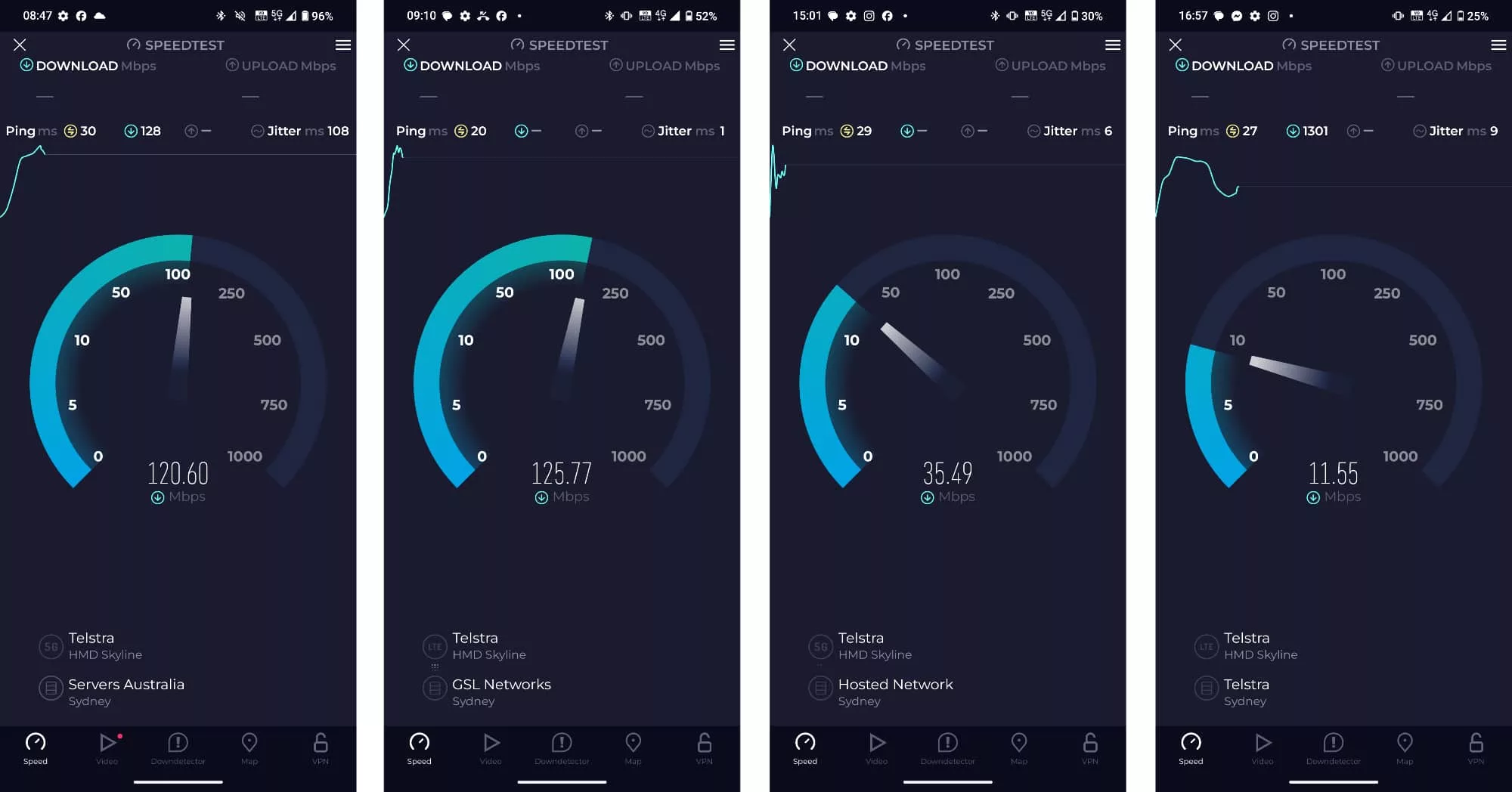
Camera
Armed with a 108 megapixel sensor, the initial vibe you might expect to have with the HMD Skyline is that this thing has a good camera. According to the spec sheet, that should definitely be the case.
The problem is the results tell a different story. Much like how a generic no-name TV with a name-brand panel might not deliver the same experience as a name-brand TV for a variety of reasons, so too does the HMD struggle with excellent image quality.
You’ll get some decent results at times, but when the sun shines too brightly, the camera has trouble controlling the exposure balance, and highlights blow out almost too easily. Sunlight is not this phone’s friend, and night time doesn’t fare all that well at times, either, producing slightly noisy images at times.


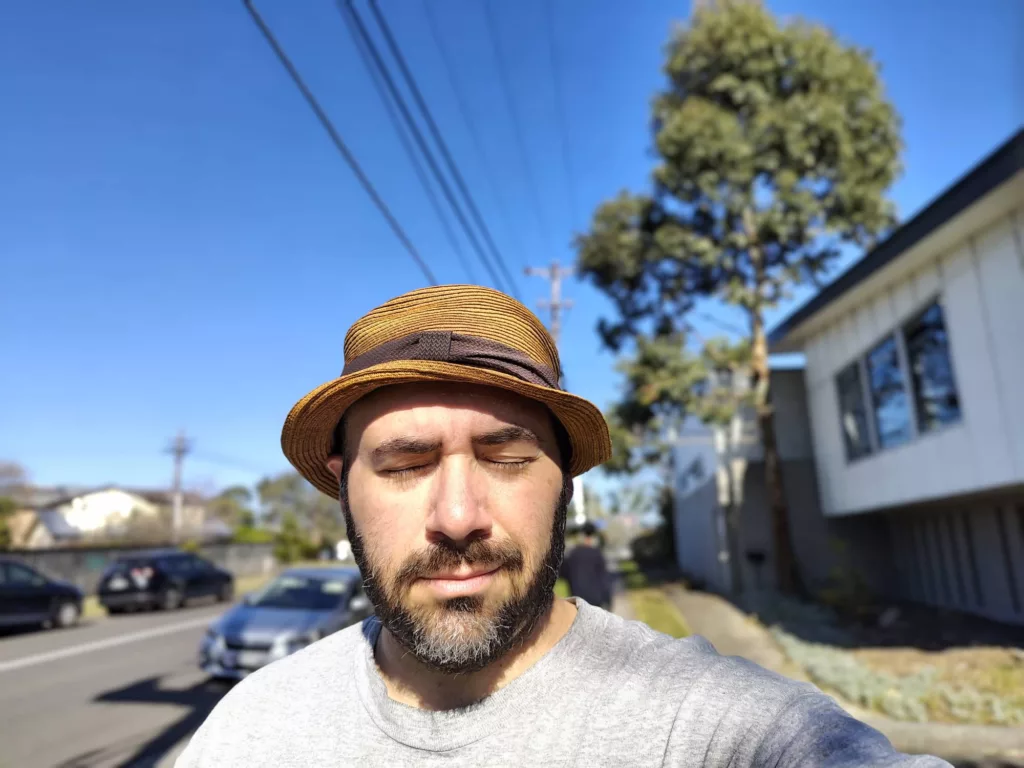
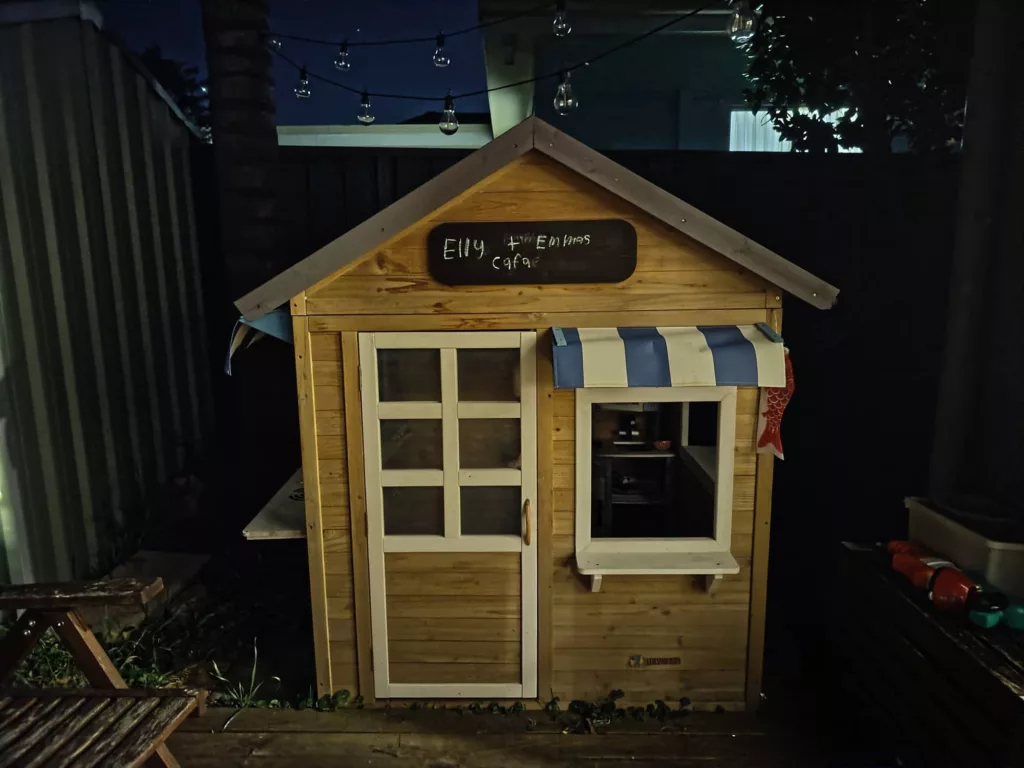
Getting a quick focus lock is also problematic here, with several shots coming in a little on the blurry side. Give the Skyline a breath or two to catch up, and those shots should be sharp enough, provided there’s enough light to help.
HMD has also provided a 50 megapixel 2X optical for getting a few slightly closer shots, but 2X isn’t much of a jump, so how much use this gets could be questionable.
At least the 13 megapixel ultra-wide can get a little more image in, with the combination there for depth-based portrait shots.
Overall, despite the big sensor, the rear camera system is only okay, and the same is true for how you use it.

The camera app itself isn’t bad — it’s fairly stock for Android — but it can load slowly and sometimes crash, almost too easily. Sometimes the camera app loads but not the camera itself, making you force-close the app and re-open in the hope that everything works again.
At least the front offers a sizeable 50 megapixel camera for selfies, making them big enough to get more of you into it.
Battery
One area that handles well is the battery, delivering up to two days of real world use in our tests.
Testing the phone by using it as our daily driver for several days, we found the Skyline could hit from 7AM one day to 7PM the next without regular usage, pulling in about three hours of screen time for that time. If you use the phone’s big screen a little more, expect the full day minimum with a little bit more juice in the tank for after.
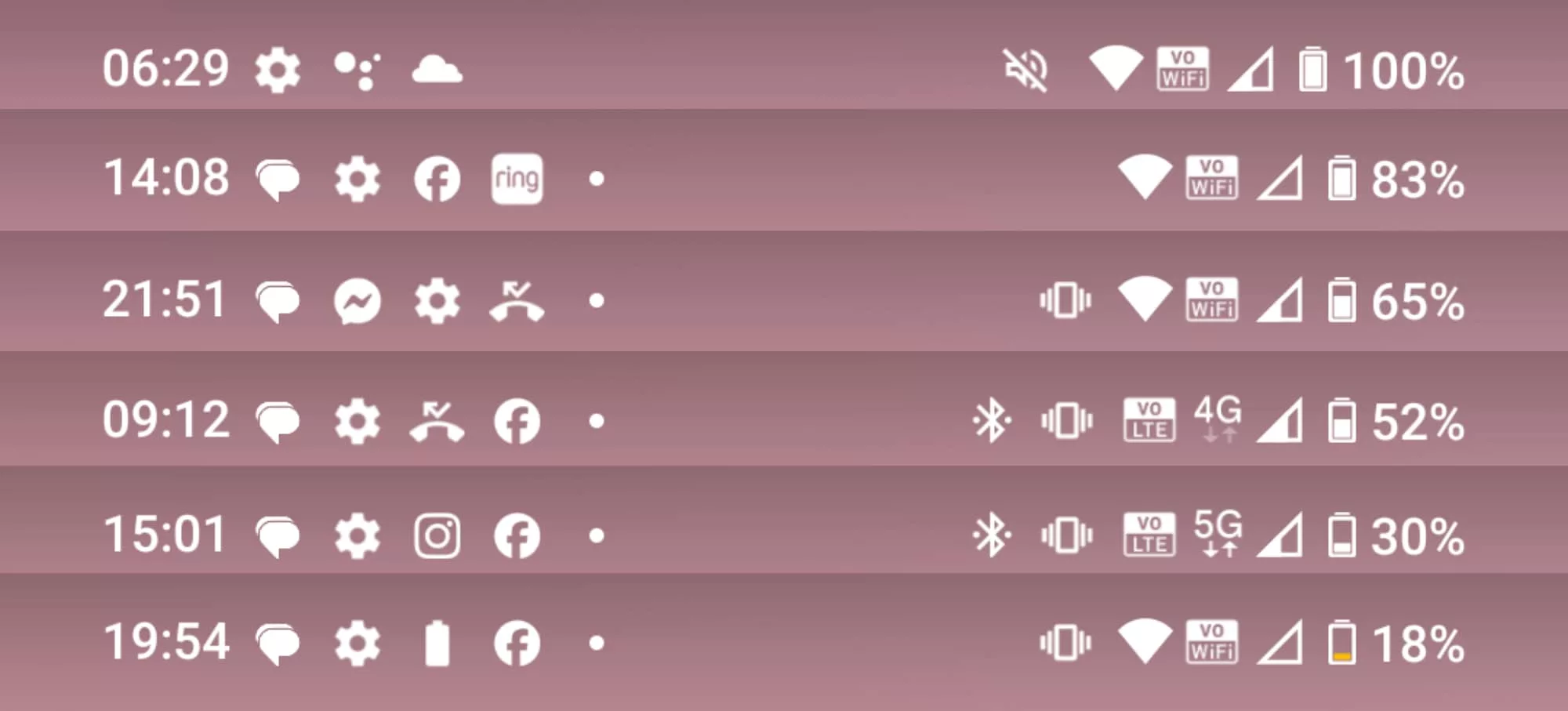
Helping the battery along is the charging system, and HMD has really done something quite well here, throwing in support for Qi2 before Samsung and Google did.
Outside of the Skyline, this year’s Android flagships have largely ignored the whiz-bang-new wireless charging standard that came out last year. An evolution of both Qi and Apple’s MagSafe, Qi2 provides magnetic wireless charging, not only allowing for fast wireless charging, but charging that stays in position.
It means bedside wireless magnetic chargers work with the HMD Skyline, even if they don’t work with either the Samsung Galaxy S24 Ultra or the Google Pixel 9 Pro XL.
It also means the HMD Skyline supports some of the MagSafe wallet accessories normally reserved for the iPhone, giving it a bit of an accessorising edge.
Confused? We are, too. It’s staggering that HMD joined the Qi2 bandwagon before bigger Android mobile makers, but it’s a win for the battery, because it means wireless chargers can give you a little more juice at times.
Value
The price gives us pause, though.
Available in Australia for $899, HMD’s Skyline appears acceptable value for what you get — big screen, big camera, Qi2 charging — largely billing itself as the entry-level high-end phone you didn’t know you wanted. It’s just it can also feel a little high priced overall.
When competitors from Google can undercut HMD all too easily, the Skyline feels like it should be placed closer to $749 or $799, given it still needs work.
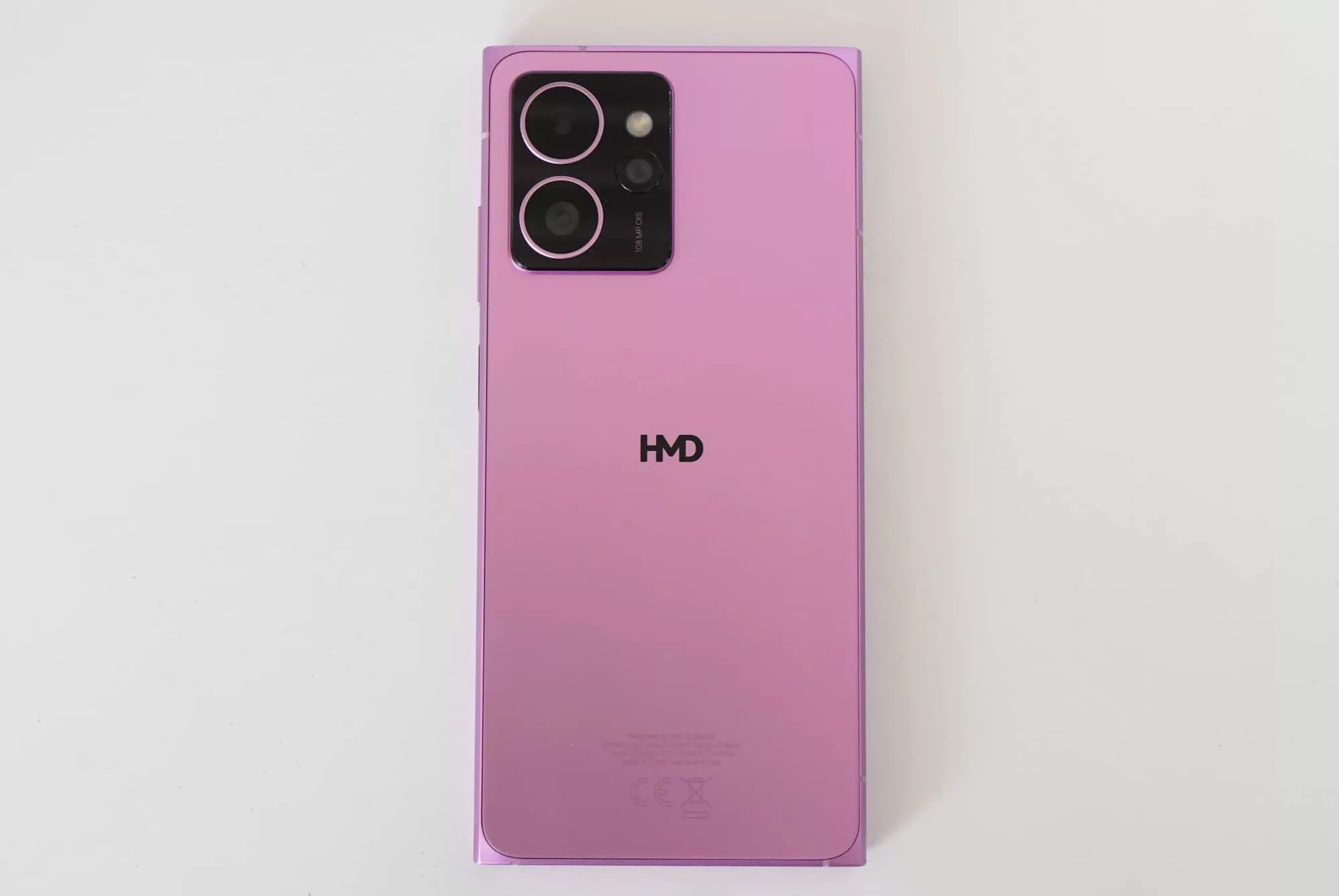
What needs work?
Things could be better.
The camera could be improved and arguably more than just a 108 megapixel brag, the performance improved, and the bugs ironed out.
One of these could be the Qi2 connection, which strange as it may be is the first of its kind for an Android phone. We love that it’s here, but are less enthused with how magnetic it might be. On some of the Qi2 charging pads, it doesn’t feel as solid a connection as it should have.
With the iPhone’s MagSafe and Qi2 connection, the hold is great. On the HMD Skyline, it’s less great with some charging panels. Interestingly, it works with standard MagSafe, but the hold may not be as strong on those. A small touch saw the Skyline fall from the Anker Cube when held upright, even though it did charge, which is something.
What we love
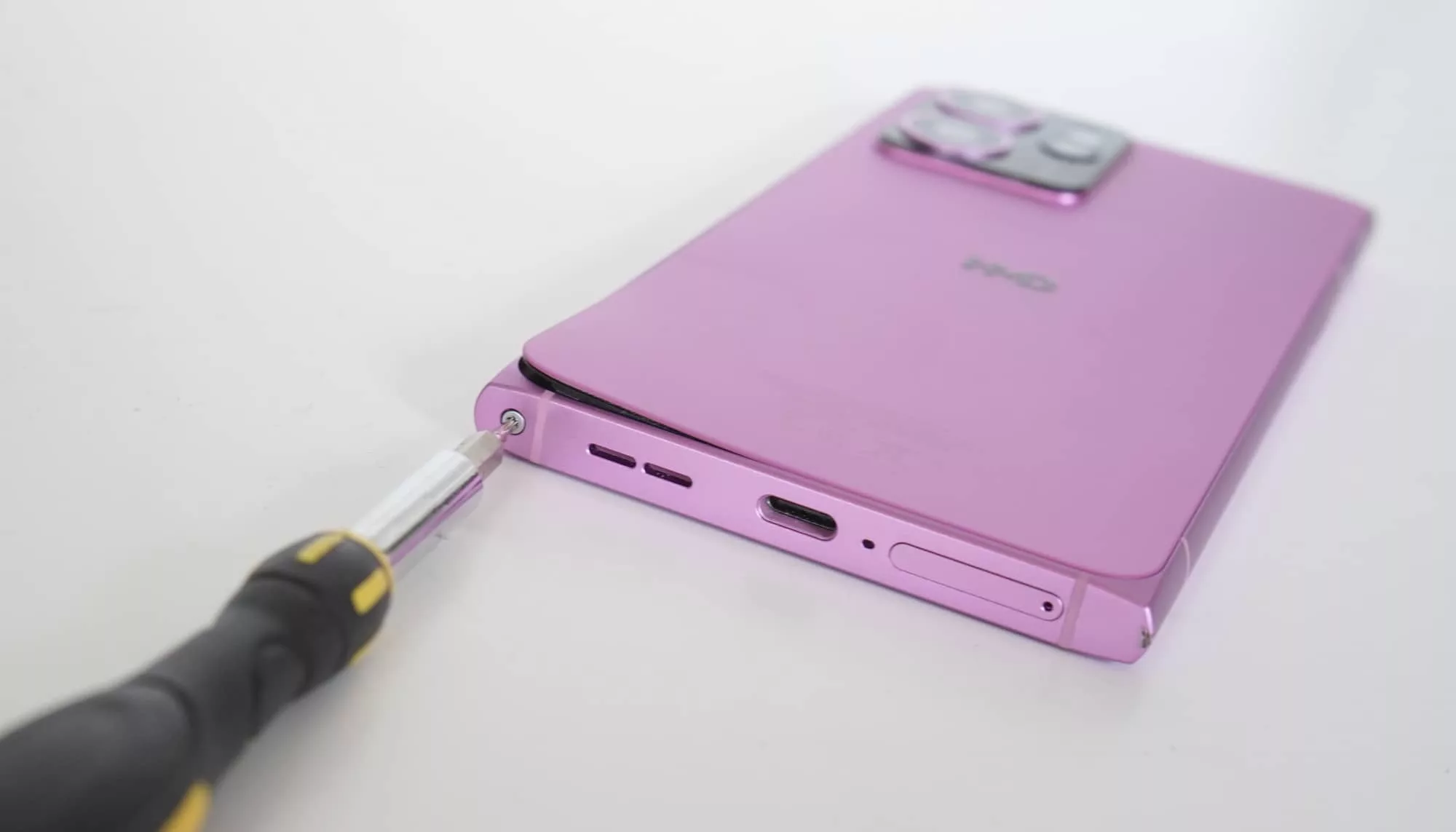
While the camera isn’t quite up to scratch in the ways we’d hoped, the HMD Skyline is more durable than we expected, something the repairable design helps with.
An accidental fumble with the phone saw our Skyline review unit hit the ground higher than we’d like, and survived with minimal paint wearing and a slight scuff here and there. The screen was fine, with most of the damage found on the corners, which are definitely thicker than most phones.
Interestingly, it was the unusual design which helped save our Skyline from certain disaster. And yet, it’s also HMD’s foresight that would give us the ability to fix this long term.
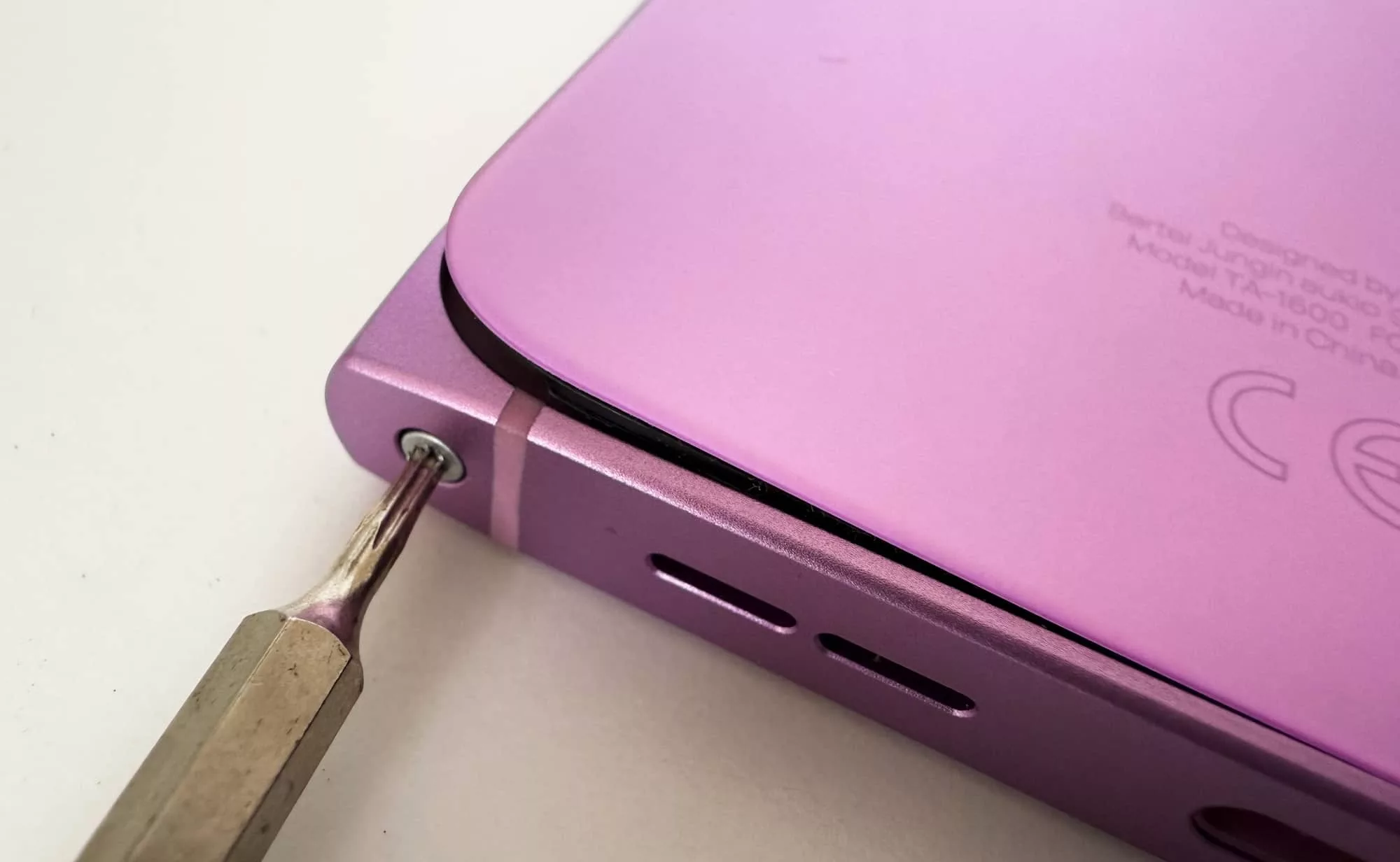
Grab a small hex screwdriver and pop open the hardware, and you too can have a try at fixing the phone. The back takes a little effort to pop off — it’s not just as simple as turning the screwdriver; you need to pry it off — but it’s there if you want to dabble.
Some will definitely be more comfortable with it than others, but if you end up breaking the screen of the Skyline, you can also fix it with a bit of effort.
You can’t, sadly, repair the chassis — those scuff marks will be there for the life of the phone — but the important bits can be replaced, and the case marks a bit of a battle scar of sorts.
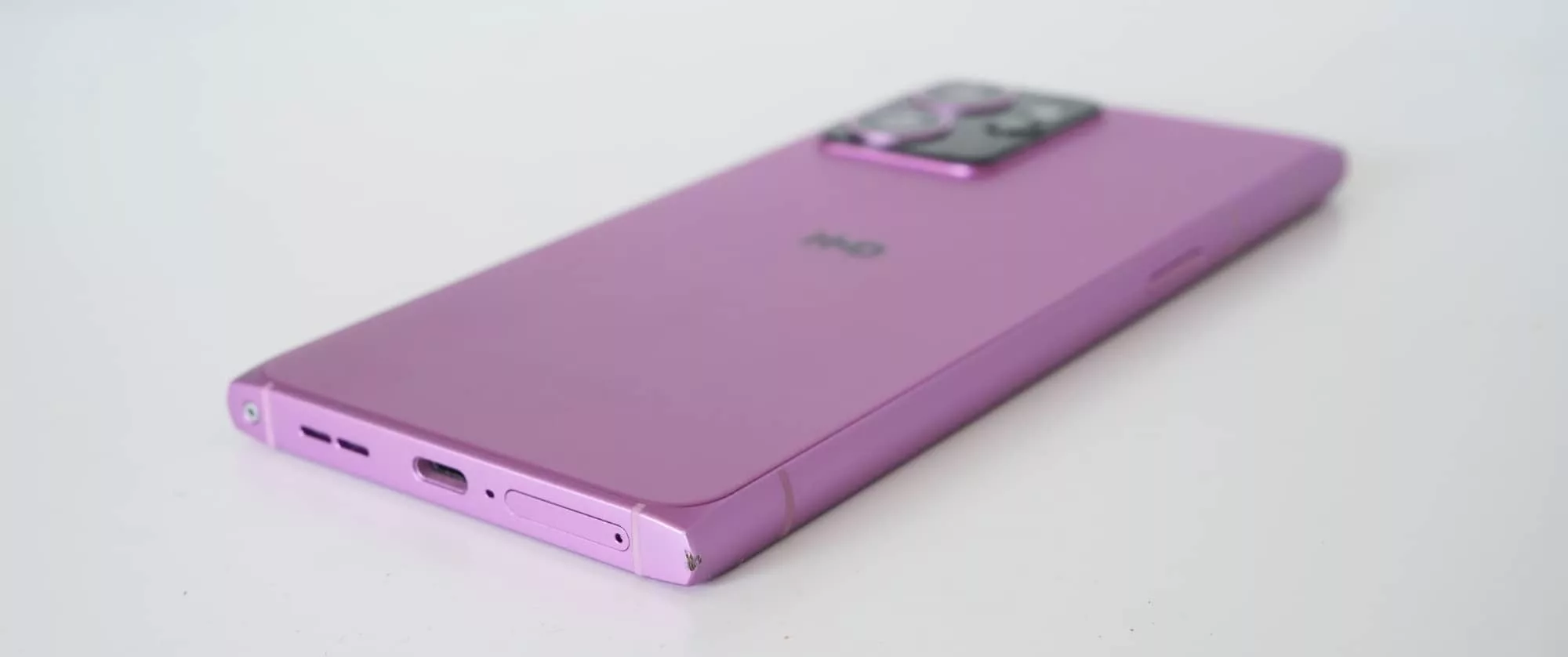
Final thoughts (TLDR)
While improvements need to be made, the Skyline is definitely one of the more interesting phones to come out of HMD in a while.
Normally a brand for the low-end, the Skyline feels deliberately higher, and that can only be a good thing, even if it’s a bit of a starting point.
The battery is strong. There’s water resistance. The repair game is nice to have. The Qi2 is surprising. HMD’s Skyline is a phone that surprises. It’s a mostly positive handset that should be a little lower priced, and if you can find it for less, could be a solid bargain.
